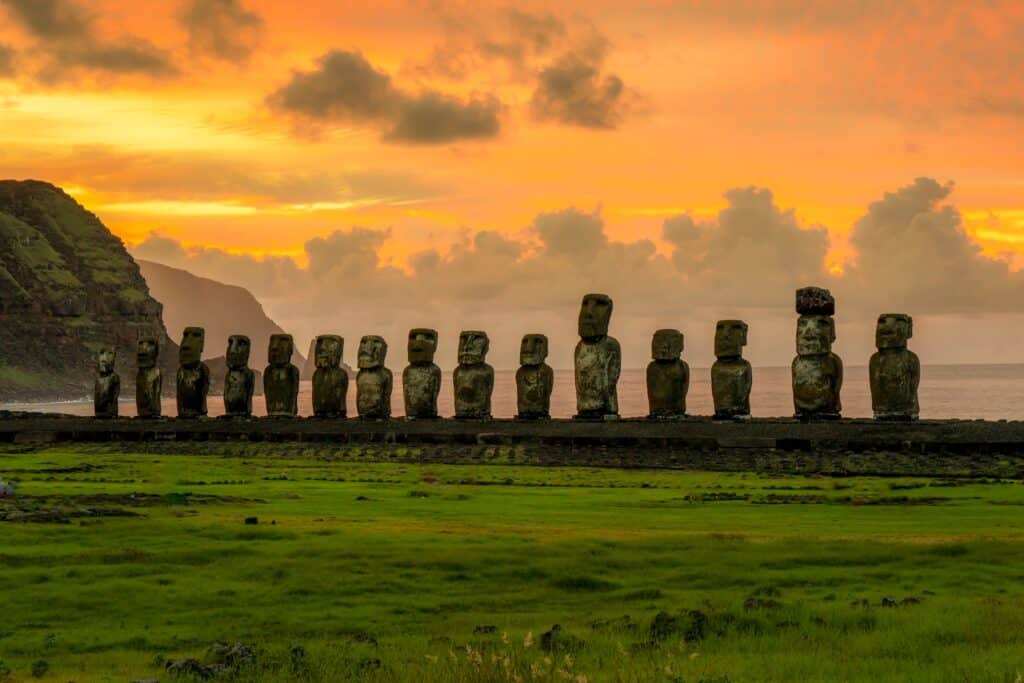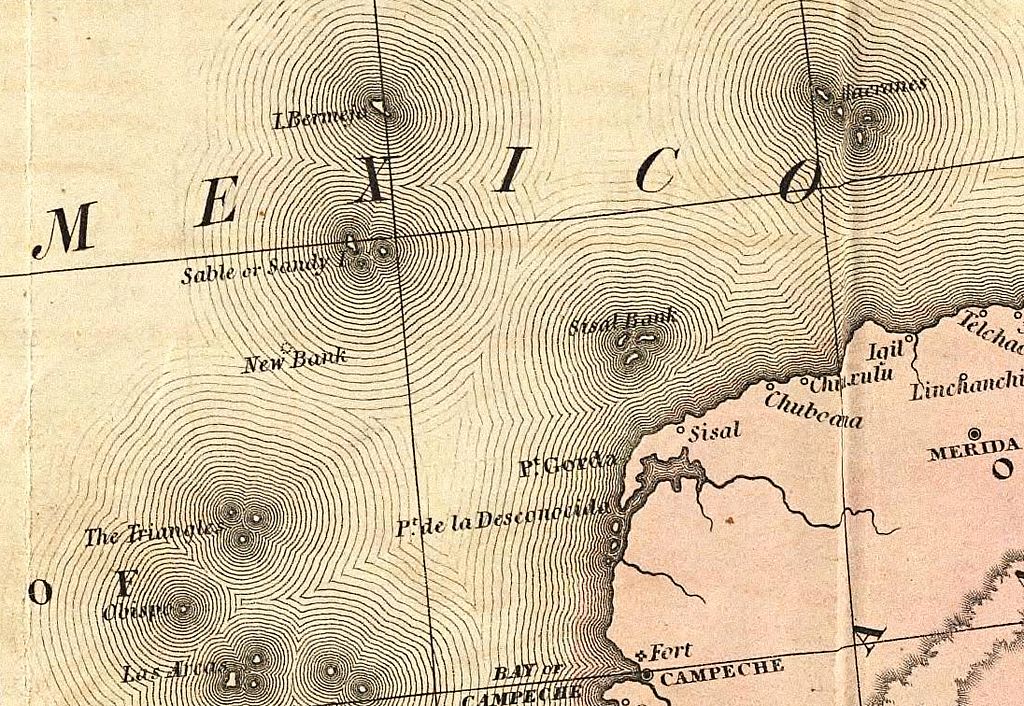Scattered across the globe are islands that hold secrets as deep as the waters surrounding them. These mysterious places, often shrouded in myths and unanswered questions, continue to intrigue explorers, historians, and dreamers alike. From ancient ruins to unexplained phenomena, each one has a story that remains unsolved, sparking curiosity and speculation. Whether rooted in legend or documented through strange discoveries, these remind us of how much of our world is still unknown. Their enigmas invite us to explore the boundaries of knowledge and imagination. Here are some of the most fascinating islands whose secrets remain unsolved.
The Eye Island

Located in Argentina’s Paraná Delta, “The Eye” is a nearly perfect circular island that mysteriously rotates on its axis. Discovered via satellite imagery, this uninhabited landmass measures approximately 387 feet in diameter and is surrounded by a thin channel of water. The island’s precise shape and movement have baffled scientists, leading to various theories ranging from natural geological processes to supernatural explanations. Some speculate that underwater currents or unique sediment compositions might be responsible for its rotation. Others suggest that its movement could be due to buoyant vegetation mats that float and spin. Despite numerous studies, no definitive explanation has been established, leaving “The Eye” an ongoing enigma. Its remote location and challenging terrain have limited extensive on-site research, further deepening the mystery.
Oak Island

Situated off the coast of Nova Scotia, Canada, Oak Island is famed for the “Money Pit,” a deep shaft discovered in the late 18th century, believed to conceal hidden treasure. Over the centuries, numerous expeditions have attempted to excavate the pit, encountering intricate booby traps and water-filled tunnels that have thwarted efforts and led to several fatalities. Theories about the buried treasure range from pirate hoards to religious artifacts like the Holy Grail or the Ark of the Covenant. Artifacts such as old coins and inscribed stones have been unearthed, but no substantial treasure has been recovered. Its complex underground structures suggest advanced engineering, raising questions about the original builders’ identities and intentions. Modern technology, including sonar and drilling, continues to be employed in the search, yet the mystery endures. The History Channel’s series “The Curse of Oak Island” has brought renewed attention to this enduring enigma.
Easter Island

Easter Island, or Rapa Nui, located in the southeastern Pacific Ocean, is renowned for its massive stone statues known as Moai. Carved by its early inhabitants between 1400 and 1650 CE, these monolithic figures, some weighing over 80 tons, were transported across the island without the use of wheels or large animals. The methods employed to move these colossal statues remain a subject of debate among archaeologists. Its deforestation and the societal collapse of its civilization add layers to its mystery, with theories suggesting environmental degradation, overpopulation, or external contact as contributing factors. Recent studies propose that the statues were “walked” to their locations using a sophisticated system of ropes and human coordination. Despite these insights, many aspects of the island’s history and the full purpose of the Moai continue to elude definitive explanation.
Flannan Isles

The Flannan Isles, a small cluster of islands in Scotland’s Outer Hebrides, are infamous for the mysterious disappearance of three lighthouse keepers in December 1900. When a relief vessel arrived, it found the lighthouse unattended, with no sign of the keepers—James Ducat, Thomas Marshall, and Donald McArthur. The only clues were a set of oilskins left behind, suggesting one keeper ventured out without proper gear, and logs indicating a severe storm, though local weather reports contradicted this. The official investigation concluded that the men were likely swept away by a rogue wave while attempting to secure equipment during a storm. However, the lack of concrete evidence has led to alternative theories, including abduction, foul play, or supernatural involvement. The incident inspired the 2019 film “The Vanishing,” which explores fictionalized accounts of the events. To this day, the fate of the three men remains one of maritime history’s most enduring mysteries.
Bermeja Island

Bermeja Island was once charted in the Gulf of Mexico, north of the Yucatán Peninsula, appearing on maps from the 16th century until the 20th century. However, modern surveys have failed to locate the island, leading to speculation about its existence. Some theories suggest that it sank due to natural geological events, while others propose it never existed and was a cartographic error. Its supposed location holds strategic importance for determining maritime boundaries and oil rights between Mexico and the United States. In 2009, the National Autonomous University of Mexico conducted an extensive study but found no evidence of Bermeja’s existence. Conspiracy theories have emerged, alleging that it was deliberately removed from maps to alter territorial claims. Despite technological advancements in mapping and satellite imagery, it remains a phantom island, its true nature unresolved.
Cocos Island

Cocos Island, located off the coast of Costa Rica, is often linked to legends of buried pirate treasure. Stories suggest that notorious pirates, such as Captain William Thompson, hid vast riches on the island in the 19th century. The most famous tale involves the Treasure of Lima, a hoard of gold, jewels, and religious artifacts spirited away during Peru’s independence struggle. Over 500 expeditions have attempted to locate the treasure, employing various methods from traditional digging to modern technology, yet none have succeeded. Its dense jungle and rugged terrain make exploration challenging, and its status as a national park restricts unauthorized searches. Some believe that the treasure was never hidden on Cocos Island, while others speculate it remains concealed, awaiting discovery. The allure of untold wealth continues to draw adventurers, keeping the legend of Cocos Island’s treasure alive.
Hy-Brasil

Hy-Brasil is a legendary phantom island said to appear off the west coast of Ireland once every seven years. First noted on maps in the 14th century, it was depicted as a circular landmass with a central river. Despite numerous expeditions, no tangible evidence of its existence has been found, leading many to consider it a myth. Some theories suggest it was a misidentification of real islands or optical illusions caused by atmospheric conditions. It has been linked to various folklore tales, including those of advanced civilizations and hidden treasures. Its elusive nature has inspired literature and art, symbolizing the quest for the unattainable. Modern interpretations often view it as a metaphor for lost worlds and the mysteries of the sea.
Palmyra Atoll

Located in the Pacific Ocean, Palmyra Atoll is an unorganized U.S. territory known for its untouched natural beauty and eerie atmosphere. During World War II, it served as a naval air station, but post-war, it became largely uninhabited. In 1974, the atoll gained notoriety due to the mysterious double murder of a yachting couple, Malcolm “Mac” Graham and Eleanor “Muff” Graham. Their disappearance led to a high-profile trial, resulting in the conviction of Duane “Buck” Walker, who had been found sailing their yacht. The case raised questions about the atoll’s isolation and the potential for unreported crimes. Some visitors have reported unsettling experiences, attributing them to the island’s desolation. Today, it is a National Wildlife Refuge, with access restricted to protect its unique ecosystem.
Bouvet Island

Bouvet Island is a remote, uninhabited island in the South Atlantic Ocean, considered one of the most isolated places on Earth. In 1964, a lifeboat was discovered on the island’s shore with no trace of its occupants or any shipwreck nearby. The origin of the lifeboat remains unknown, as no vessels were reported missing in the area at that time. Its harsh climate and treacherous waters make it an unlikely destination for mariners, adding to the mystery. Some speculate the boat was part of a secret operation or an unreported expedition. Despite investigations, no further evidence has been found to explain the lifeboat’s presence. It remains a desolate and enigmatic location, with its secrets frozen in time.
Nan Madol

Nan Madol is an ancient city built on a series of artificial islets off the coast of Pohnpei in Micronesia. Constructed with massive basalt stones, the site served as the ceremonial and political center of the Saudeleur dynasty until around 1628. The engineering methods used to transport and assemble the stones, some weighing up to 50 tons, remain a mystery. Local legends speak of the stones being moved by magic or levitation. Its abandonment is also unexplained, with theories ranging from invasion to environmental changes. Archaeologists continue to study Nan Madol, seeking to understand its construction and the society that built it. In 2016, it was designated a UNESCO World Heritage site, highlighting its cultural and historical significance.
North Sentinel Island

Part of India’s Andaman and Nicobar Islands, North Sentinel Island is home to the Sentinelese, one of the world’s last uncontacted tribes. The islanders have resisted contact with outsiders, often responding with hostility to intrusions. In 2006, two fishermen were killed when their boat drifted too close to the island. The Indian government has established a buffer zone around the island to protect both the Sentinelese and potential visitors. Little is known about their language, culture, or societal structure due to the lack of interaction. Its dense forest canopy and lack of natural harbors have helped preserve its isolation. North Sentinel Island remains a subject of fascination and respect, symbolizing the right of indigenous peoples to live undisturbed.
This article originally appeared on Rarest.org.
More from Rarest.org
The 16 Best Wildlife Safari Destinations in Africa

Africa is a treasure trove of wildlife and natural beauty. Its vast landscapes offer some of the best safari experiences in the world. These safari spots are not just about animals but also about the breathtaking scenery and the rich cultural heritage of the regions. Read More.
8 Treasured Vintage Perfume Bottles and Their Values

Vintage perfume bottles are more than containers; they are pieces of art. Collectors and enthusiasts treasure these relics for their craftsmanship and history. Read More.
10 Most Sought After Retro Kitchenware

Retro kitchenware offers a nostalgic charm that continues to captivate collectors. From vibrant mixing bowls to elegant dinnerware, these vintage pieces bring both function and flair to any kitchen. Read More.
